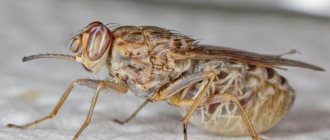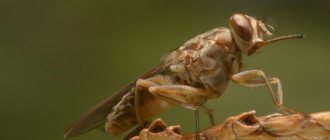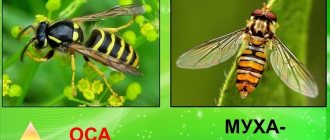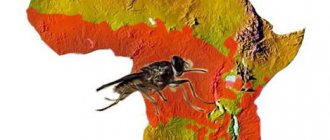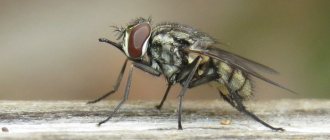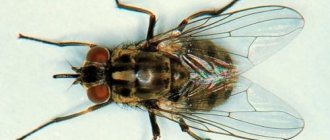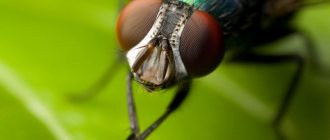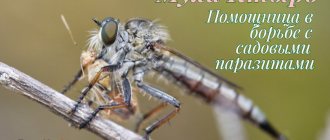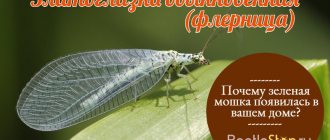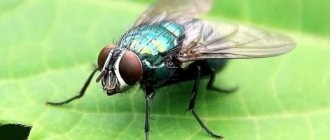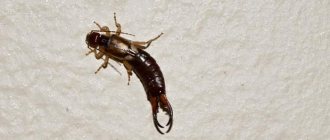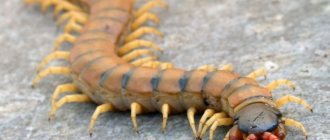At first glance, the name of the insect looks somewhat unusual for any European dialect. However, if you voice an accurate translation from African dialects, everything falls into place. After all, “Tsetse” for them is nothing more than a beast that kills livestock, which is roughly how the name is literally translated. Individuals living in Africa are carriers of tryponosomes - single-celled organisms that can (if ingested) cause 100% depletion, leading to death. Female insects are considered especially dangerous because they use the life potential of animals to prolong their offspring.
Distinctive features
The insect is not characterized by the presence of poisonous glands and, in general, looks quite harmless. Its miniature size does not cause visual alarm, but you should remember the structure of this creature in order to avoid unpleasant encounters. The special position of the wings above the body indicates that the fly belongs to this species. She puts them one on top of the other. And if you look closely, you will notice a characteristic plumage pattern that is similar to the shape of an ax.
In addition, a distinctive feature is a peculiar proboscis capable of injecting. Plus, this insect is given away by its size; the length of the fly reaches from 9 to 14 mm. This variety can be recognized by its reddish-gray chest, which is divided by 4 reddish stripes along the body. It is also distinguished by the color of its abdomen, which is yellow on top and gray underneath. Adding to the individual characteristics are hair antennae growing on the insect's head.
Fighting methods
Despite the fact that tsetse bring certain benefits to the ecosystem, the threat they pose to animals and people forces humanity to constantly fight these insects.
At the beginning of the last century, when the number of livestock declined sharply due to African plague, the number of cases of sleeping sickness infection also decreased. This circumstance served as the reason for the shooting of hundreds of thousands of wild ungulates, lions and elephants, since it gave rise to the assumption that the fly only drinks the blood of large animals. However, mass extermination did not reduce the population of deadly insects - it later turned out that tsetse can also feed on the blood of small rodents, birds and lizards.
When it was discovered that the number of flies in forested areas was much higher, people began actively cutting down trees and bushes. Having found out that this method also did not produce results (and, in addition, caused enormous harm to the environment), the Africans switched to more gentle measures - in particular, they began to build special traps with insecticides.
Deforestation is an extremely radical and not always effective measure against dangerous creatures, in this case the tsetse fly
A very original method of combating tsetse was invented on the islands of the Zanzibar archipelago. Scientists artificially raised several million flies, after which they separated the males from the females and sterilized the former by irradiating them with low doses of radiation. When the males were released, they mated with females, who considered themselves fertilized, but were subsequently unable to produce offspring.
Varieties
A total of 23 species of this fly, which poses a danger to humans, have been registered; fortunately, all of them live only in Africa. The main habitat of the tsetse fly is located in the south of the Sahara, only one species lives on the Australian mainland. This type of fly is not found on other continents to this day.
It is noteworthy that these insects feed on the blood of mammals, regardless of gender (unlike mosquitoes). For one-time consumption, they need a blood volume three times their own weight. Many blood-sucking insects consume blood once in their lives, providing nutrition for their offspring. This makes it impossible for infections to spread. The tsetse fly is a carnivorous insect that regularly feeds on blood. This state of affairs creates a direct danger for the spread of pathogens.
Habitat
Glossina lives mainly in equatorial and subequatorial Africa and brings certain benefits to the continent, helping to protect areas from overgrazing and soil erosion, which is usually caused by the abundance of cattle.
According to the famous West German zoologist Bernhard Grzimek, many areas where wild animals live, where the tsetse fly lives, were able to remain untouched by humans solely thanks to this insect.
There are a large number of species of this insect. Fortunately, they cannot survive in the CIS countries due to the climate
According to their habitat, representatives of the genus Glossina are divided into three groups:
- Fusca, living in the forest zone;
- Morsitans, which prefer savannas and savannah forests;
- Palpalis, living in coastal areas with rich vegetation.
The gradual expansion of forested areas has led to an increase in the tsetse population and the spread of most species of this insect (including species that are carriers of infections).
Read on topic:
Appearance and danger of the moose fly
17.06.2019
What does the appearance of a fly in a dream mean?
01.06.2019
How to get rid of hoverfly larvae
01.06.2019
What does the appearance of a fly in winter mean?
01.06.2019
Fortunately, deadly flies do not survive in the countries of the former USSR - the climate here is too cold for them.
Method of defeat
The bite of a tsetse fly can cause damage not only to herbivorous mammals, but also to the human body. They very quietly land on exposed areas of the skin, and once on clothing, tsetse explore the area until they find an unprotected area. The bite usually causes pain, subsequently accompanied by itching. On the insect's proboscis there is a chain of small teeth, which allows them to instantly immerse the trunk to great depths. Next, saliva is injected, which prevents blood clotting.
All actions occur almost instantly, and after a split second the fly begins to rapidly absorb blood, which becomes noticeable by its instantly swelling abdomen. It is noteworthy that clothing is not able to protect its owner from the bite of a tsetse fly. Not finding an open area of skin, the insect begins to make tests on heated areas until it reaches the goal. It is important to understand that the length of the insect’s trunk allows it to bite even a rhinoceros whose skin thickness exceeds 4 cm.
Nutrition
The tsetse fly eats only the blood of warm-blooded artiodactyls and humans. Almost every day they suck it. Flies show different activity: some species fly in the morning, other species fly in the afternoon. In the forests they land on people. Female flies drink blood from large animals, piercing their skin and injecting saliva into their body. To get into a blood vessel, flies use small sharp teeth located at the end of the trunk. The teeth bite through the skin and elastic vascular wall. By injecting saliva into the vessel, containing trace elements that interfere with clotting, the tsetse drinks blood. Her thin belly inflates, taking on a streamlined shape.
The tsetse fly feeds on blood:
- antelope;
- buffalo;
- hare;
- monitor lizard;
- crocodile;
- birds;
- person.
The fly has a large enough belly that it can withstand swelling when sucking out blood fluid.
Consequences of a bite
These insects are carriers of sleeping sickness, which is fatal. Veterinarians call this disease “Nagana”, which is caused by special parasitic single-celled organisms called trypanosomes. Oddly enough, the carriers of this type of single-celled parasite are wild animals living in the vast expanses of the savannah. And the disease develops only in livestock that is not adapted to such a neighborhood. The result is mass mortality of animals.
Sleeping sickness, which affects people, is in the nature of an epidemic transmitted from one patient to another through blood-sucking insects. Symptoms of this disease manifest themselves in the form of fever, as well as general weakness, sleep disturbances and headaches, which determined the name of the disease. First of all, the immune system is under attack, and then the nervous system suffers. Formations in the form of tumors appear on the skin, the patient is in a depressed sleepy state. If measures are not taken, then within 2–3 months the person will become completely exhausted and fall into a coma, passing into an unconscious state.
What is the danger of tsetse
These insects are not poisonous, so their bite itself does not pose a threat to living beings.
The danger lies in the fact that some representatives of the genus Glossina are carriers of trypanosomes - single-celled parasitic organisms that are deadly to both animals and humans.
You should be especially careful when visiting countries in the equatorial zone. You need to get a number of vaccinations to protect yourself
Trypanosomes are causative agents of dangerous diseases:
- Rhodesian (acute) sleeping sickness. It appears a week after infection and ends in death in the absence of timely treatment. The first sign of the disease is the appearance on the body (usually on the head, arms or legs) of a trypanosomal chancre, resembling a boil. After 2-3 weeks, the chancre disappears, leaving behind an ugly scar. In the future, the patient may experience severe headaches, fever, tachycardia, skin spots, joint pain and sleep disturbances. When the parasites reach the brain, the disease enters its final stage - the infected person falls into a coma and dies. Despite the fact that the causative agents of Rhodesian trypanosomiasis are present in the blood of some species of antelope, this disease is observed only in humans - it is not dangerous for animals.
- Gambian (chronic) sleeping sickness. The clinical picture is similar to the previous pathology, with the only difference that the symptoms develop much more slowly - the final stage occurs several months or even years after infection. The disease affects humans and monkeys.
- Nagana. An invasive disease of animals, which is characterized by edema and fever. It usually occurs in the form of an epizootic, most often manifested in warm and rainy seasons in places where the tsetse fly lives. Patients experience profuse watery discharge from the nose and eyes, exhaustion, anemia, swelling in the extremities, chest and genitals. In the absence of adequate therapy, animals die. Almost all types of animals are susceptible to infection, with the exception of mules and goats - they are immune to the Glossina bite.
Not only people, but also animals suffer from dangerous diseases, causing farmers to suffer huge losses.
Means to combat the disease
The only effective remedy that can cure the disease is pelafritin. This drug is very difficult to obtain, it has a significant cost, for this reason, when an epidemic occurs, not everyone can be cured. Every year, 60,000,000 people living on the African continent are at risk of contracting sleeping sickness.
The risk of epidemics increases due to the fact that the tsetse fly is widespread in the poorest countries in Africa, which are not able to localize the problem on their own. Part of the area of these states consists of fertile lands that cannot be cultivated due to the spread of the tsetse fly.
This does not have the best effect on the economy of these countries, because such land does not generate income; it is called a green desert. Both people and pets cannot live in such places. The insect causes the annual death of about 3 million heads of livestock. So it turns out that it is not a large insect that causes colossal problems that hinder the spread of agriculture on the mainland.
Siberian specifics: the dangers of mosquito, gadfly, and midge bites
Very rarely, cozy summer evenings in nature end for a person with a reddish rash - multiple bites of blood-sucking insects with unpleasant consequences: swelling, itching, infection of the wound, which can result in an infectious disease.
Gnus (a set of species of blood-sucking insects) is a phenomenon well known in Siberia and the North. These are mosquitoes, biting midges, small midges and a whole range of flies. The bites of these insects cause significant harm to human health. Currently, small bloodsuckers are widespread throughout central Russia.
In appearance, midges are similar to small flies (body size - from 2 to 6 mm). Females lay eggs on underwater rocks and plants, since the larvae develop only in running water.
Botflies are a large family of dipterous insects, or, more simply, flies, which mainly parasitize domestic animals. A distinctive feature of this family, which numbers about 150 species, is their parasitic lifestyle - with the main danger being the larvae that can develop in the human body after bites. In our area, females of the gastric and cavitary species of gadflies pose a danger to humans.
There are also small two-winged creatures called midges. There are more than 1000 species of them, and almost all of them are bloodsuckers that attack people and domestic animals. And although biting midges are significantly smaller in size than mosquitoes, they are superior to them in “cruelty.” Midges are so bloodthirsty that they attack lizards, frogs and even insects. The stinging biting midge is especially unpleasant and dangerous.
Symptoms and possible complications
It is very rare that bites of blood-sucking insects in our region can cause dangerous complications. The good news is that this group of insects does not have a poisonous gland, and when they bite, they inject only a special substance that prevents blood clotting. This is what usually causes allergic reactions, which are usually not dangerous. Most often, a bitten person experiences the following reaction to insect bites:
· Itching from insect bites;
· Redness of the skin at the bite sites;
· Pain at the bite sites;
· Allergic reactions on the skin in the form of a small red rash.
When can it be dangerous?
Bites of blood-sucking insects in our region, which usually do not cause serious inconvenience, can sometimes be very, very dangerous.
Please note that:
· Multiple bites from horseflies, mosquitoes, mosquitoes, gadflies, midges or midges can lead to severe and life-threatening allergic reactions;
· Mosquitoes are carriers of such a dangerous disease as leishmaniasis;
· In African countries, “Tse-Tse” flies spread no less dangerous sleeping sickness;
· Flies can spread intestinal infections;
· Diseases such as tularemia can spread through the bites of deer flies;
· Mosquito bites can spread diseases such as malaria, dengue fever, and equine encephalitis.
· Midges and biting midges are carriers of bartonellosis, leishmaniasis, mansonellosis and onchocerciasis.
What to do?
After you find yourself brutally bitten by bloodthirsty insects, a logical question arises: how to treat insect bites, how to treat allergic reactions that have appeared? Insect bites are especially difficult in children who are unable to cope with the resulting discomfort.
So, when bitten by blood-sucking insects you should:
· Treat bites with a disinfectant (alcohol, iodine, brilliant green, chlorhexidine, etc.);
· Prevent scratching the wound, as this is fraught with severe itching and long healing (cover with a plaster, bandage, seal with special medical glue).
· To eliminate itching from a midge bite, wipe the skin with a mixture of ammonia and water in equal parts or a solution of baking soda (1/2 teaspoon per 1 glass of water). Itching and redness are reduced if you lubricate the bite site with calendula (fresh juice or tincture), juice of onion, lemon, plantain, and fresh parsley leaves. You can also use ammonia mixed with water (1:1). Fresh mint and bird cherry leaves relieve pain well. They need to be slightly kneaded, applied to the bite site and held for 1-2 minutes.
· Apply insect bite repellent to reduce itching and irritation;
· In case of allergic reactions or urticaria, you should take antihistamines.
· If atypical symptoms are observed in the form of fever, nausea, vomiting, difficulty breathing, you should immediately consult a doctor for qualified medical help. You should seek medical help in the following situations:
· If an insect stuck in the ear or under the eyelid causes swelling and severe irritation, and in rare cases, suppuration;
· With the development of atypical allergic reactions (rash, difficulty breathing, nausea, vomiting, convulsions);
· If the bite site becomes infected or suppurates, for example, if your leg is very swollen after an insect bite, you should visit a surgeon.
Prevention measures
As with many situations, it is easier to prevent bites than to treat them. A protective cape made of mesh or gauze can be soaked in birch or pine tar or a liquid composition based on tar (add 10 parts of tar and 5 parts of caustic soda to 100 parts of water and mix thoroughly). Lightly moisten the cape with the resulting mixture and dry it in a shady, windless place.
After treatment, the cape repels midges for 10-12 days.
It should be borne in mind that sweaty skin attracts blood-sucking insects 2-3 times more than clean and dry skin.
The simplest protective measures that can save you:
· Mosquito nets on the windows of the room where you spend most of the time;
· Also indoors, fumigators and special spirals against blood-sucking insects have proven themselves to be effective;
· When going out into nature, it would be useful to use repellents, which are presented in a wide range on the modern market;
· A trip out of town is best done in clothes that cover the entire body, and don’t neglect a hat.
· Limit your stay near wetlands, swamps, forests and fields during the period of massive midge flight;
· Avoid swimming in bodies of water with stagnant water, use bodies of water where treatment has been carried out to destroy mosquito larvae;
· Treat pets for fleas;
· Maintain body and home hygiene, if necessary, carry out disinfestation of the home (fighting bedbugs, fleas, lice, etc.);
· Carry an emergency allergy kit with you at all times, and if you are allergic, a “Passport for a Patient with an Allergic Disease.”
Appearance Features
Like all representatives of the order Diptera, the tsetse fly has 3 main body parts: head, thorax, and abdomen. The insect size is 9-14 mm. On the head there are large compound eyes of a dark brown color. The organs of vision are clearly separated from each other.
You can distinguish a dangerous insect from an ordinary house fly by four characteristic features:
- The short antennae have hairs forked at the ends.
- The hard proboscis, capable of piercing the skin of buffalo and antelope, is directed forward.
- Folding the wings on the back one on top of the other at rest.
- The transparent wings have a pattern of veins in the shape of an axe.
The chest consists of three segments fused together. Its color is reddish-gray, with four brown longitudinal stripes on the back. Three pairs of legs and wings are attached to the chest. The abdomen is short and wide. During feeding, it increases in size. An insect can drink an amount of blood equal to its own weight. In females, the reproductive organ, the uterus, is located in the abdomen. It is large enough to accommodate a third instar larva.
Information. Why is the tsetse fly called this? The name “tsetse” or tsetse (tse-tse) in the language of the African Bantu tribe means “fly”. This word is translated into other local languages.
The mouthparts are adapted for sucking blood. It consists of a hard lower lip, in which a sharp tongue is hidden, and an elongated upper lip covering it. After the skin is damaged, saliva is injected to prevent the blood from clotting.
Types of tsetse flies
It’s hard to imagine how much effort and probably suffering it took for entomologists to study and group dangerous insects into separate groups:
- representatives of the morsitans group live mainly in savannah forests and savannas, easily adapting to a relatively dry climate. It was these flies that contributed to the expansion of the area of wooded savannas, which is why Sierra Leonean pastoralists stopped raising horses;
- species of the fusca group are typical inhabitants of tropical rainforests; their bites are mainly inflicted on wild mammals, and less often on people and livestock;
- Tsetse flies from the palpalis group are the most moisture-loving, but they are attracted not by jungle swamps, but by open areas along river banks, where fishermen and swimmers most often become victims of insects.
It is in such natural conditions that the most dangerous insects on the planet live and breed safely, because they do not experience a shortage of food sources.
Lifestyle and reproduction
Tsetse lives for about six months. During her entire life, the female mates once, and then produces one larva every month (8-12 larvae in total). These insects are viviparous; the female bears the larva in the uterus, where it feeds on “intrauterine milk.”
The larvae develop in moist soil (burrow themselves), modifying into brown pupae. After a month, sexually mature individuals emerge from the pupae.
